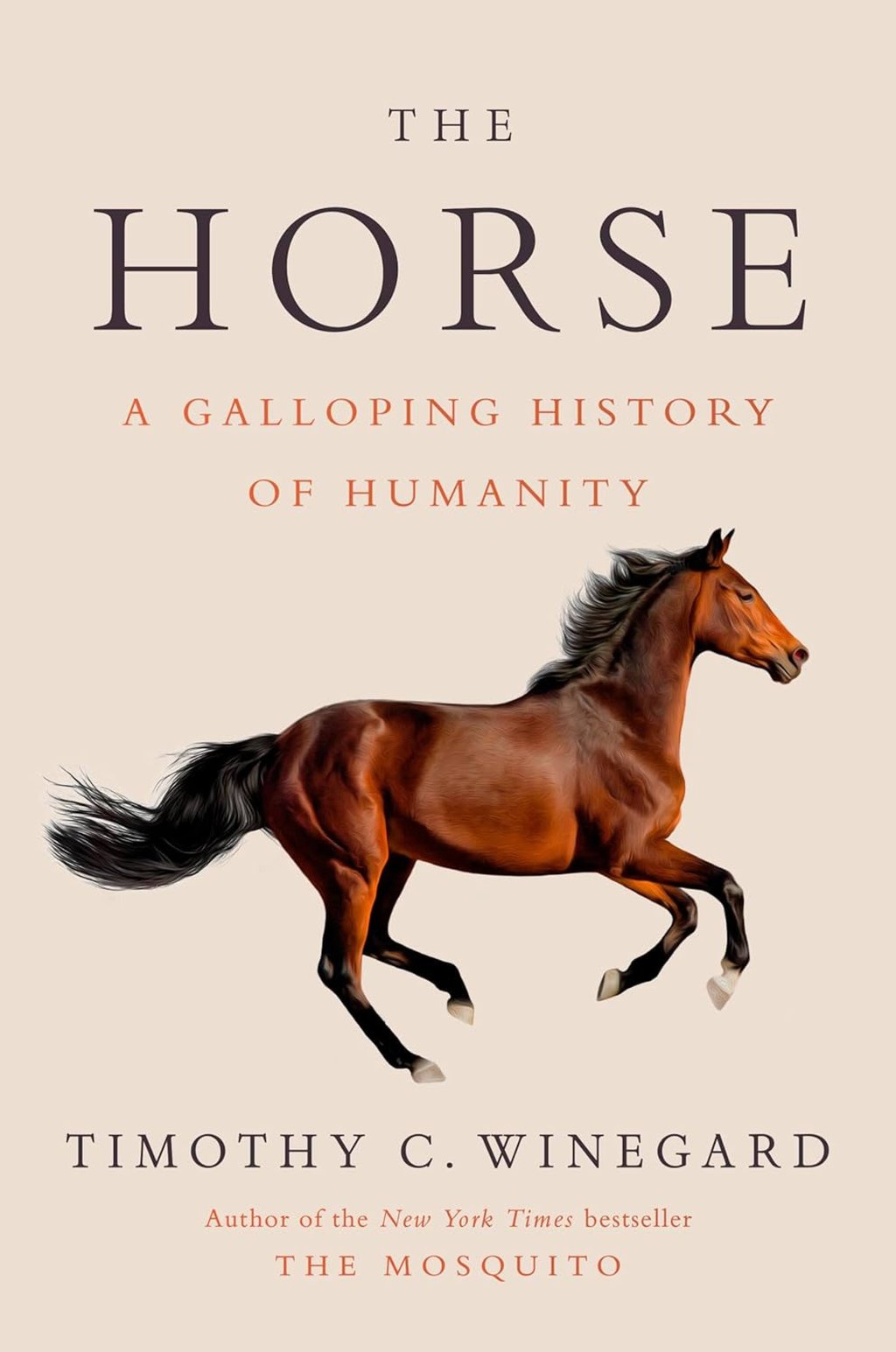Some might suggest that a doorstopper about “the influence of the horse on human history” could not possibly be interesting.
In fact, Timothy Winegard’s The Horse: A Galloping History of Humanity is fascinating, offering a fresh perspective on how crucial horses were in human development. And it almost did not happen.
Abrupt climate changes aeons ago, at the end of the Ice Age, drove horses to the edge of extinction. The remnants of an animal once found throughout much of the world were then largely confined to an area that runs roughly from eastern Europe to Central Asia – where they were hunted for food.
Still, Equus caballus might have gone the way of its brethren had it not been domesticated like cattle. Small corrals designed for milking mares have been uncovered. When someone – perhaps on a dare – decided to jump on the back of one of the more docile horses, it started “a revolution” that changed the world.

Riding horses helped farmers herd more sheep and goats and hunters cover more ground. When horses replaced oxen, their quicker gait allowed more land to be ploughed, increased yields and changed subsistence farmers to commodity exporters.
Inevitably, horses became instruments of war, first pulling archers ensconced in chariots and then as mounts. The earliest known true cavalry formation belonged to the Assyrian king Tukulti-Ninurta II (who ruled from 890-884 BC).

In relatively short order, cavalry units made the difference in battle. Those nations that had horses won wars; those that did not, tried to get them.
In many ways, these conflicts created the world we have today. Alexander extended the boundaries of his empire – and Greek culture – through Persia, India and beyond because of the success of his cavalry. Moorish invaders brought maths and science to Europe.
The Horse is extensively researched. Winegard, an associate professor of history at Colorado Mesa University in the United States, seems to quote something from everything he has ever read, including Horses, Oxen and Technological Innovation: The Use of Draught Animals in English Farming from 1066 to 1500. Sometimes I wondered if the citations were there to make a point or show off.

So, yes, my eyes glazed over in some places. Fortunately, they were often followed by the kind of trivia that can make me look brilliant at my next drinks party.
For example, I discovered horse riding led to the origin and widespread adoption of trousers, since traditional robes, skirts, togas and kilts proved less than ideal.
Also, a manoeuvre known as the Parthian shot, where riders fleeing an enemy sit backwards on their saddles and fire arrows at pursuers, is the origin of the phrase “parting shot”.
Winegard’s The Horse: A Galloping History of Humanity is interesting, charming and entertaining. But I know: I can lead you to a bookstore, but I cannot make you read.
Curt Schleier
The Horse: A Galloping History of Humanity, Timothy C. Winegard, published by Dutton.

